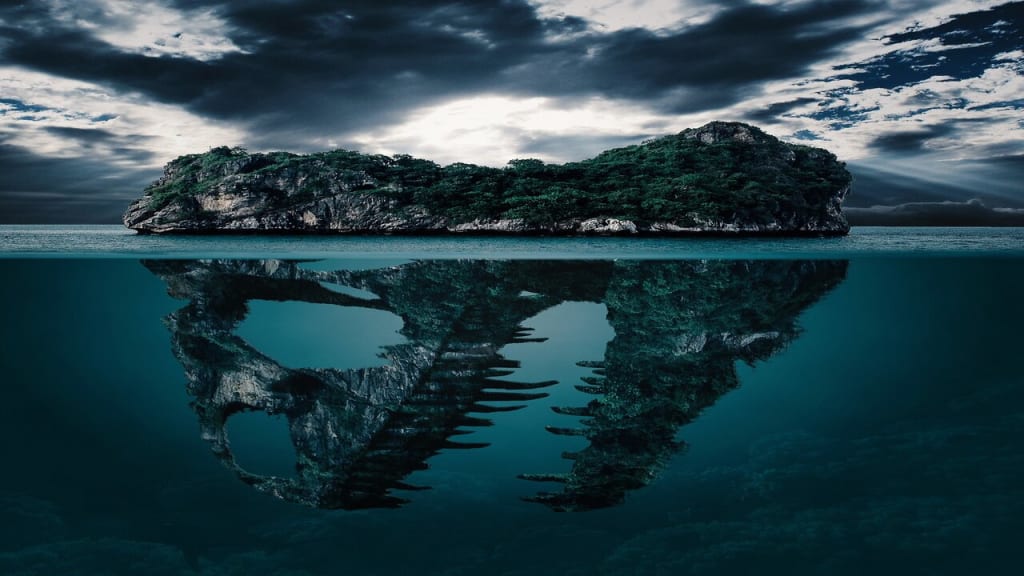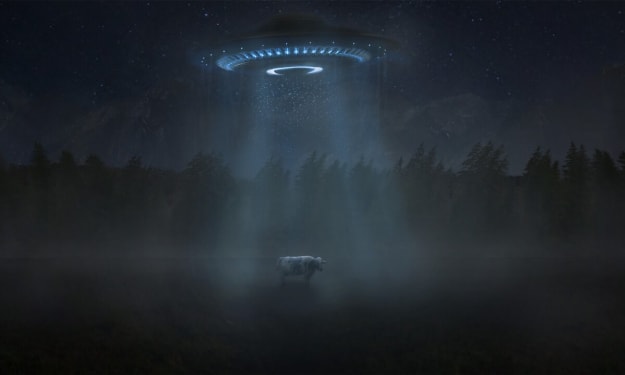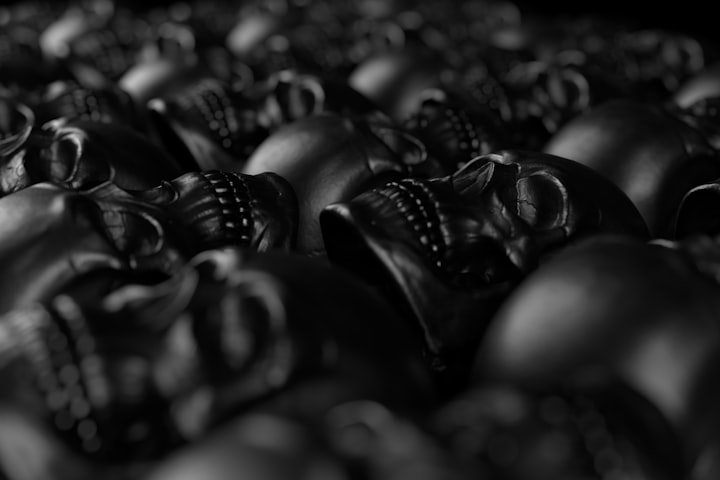Don't Ever Visit This Island
The reason why is not what you think

Imagine a sandy beach on a remote Hawaiian island. It's surrounded exclusively by a warm ocean and untouched nature. There are only a few hundred local residents on the island, but you will hardly meet them. Would you like to spend your vacation there? Well, I'll disappoint you. It's the island of Niihau, and it's been closed off from the rest of the world for more than 150 years.
During all this time, the island has been owned by one family, the Robinsons. Not only ordinary people are banned from entering it, but even the state governor. In this story, I'll tell you about the most mysterious closed islands. You'll find out what's going on in Niihau, what's the most dangerous island on the planet, and why has the island of Nihao remained closed for so many years.
When I hear the phrase closed island, the first thing that comes to mind is that there's a military base or a secret weapon testing site, like Anaweatoc Atoll in the Pacific Ocean. Until the 70s of the past century, the United States used it for nuclear testing. To clean up the soil from the radiation and make the atoll habitable again, the contaminated topsoil was buried in the enormous nuclear blast crater on Runit Island and covered with a concrete dome.
In 1980, the US government declared the atoll safe and people began to return there. But the scientists claimed that the island would become relatively habitable only by 2027.
Grunyard Island in Scotland is yet another military test site quarantined for 48 years until it was deemed safe for people. Biological warfare tests were carried out in 1942 with bombs full of anthrax ores exploding above the island. However, the British military didn't consider that these bacteria could remain in the soil for decades. In 1986, they tried to decontaminate the island using 280
tons of formaldehyde. Four years later, the warning signs were removed and a private individual bought the island, though it is still uninhabited. What if the Hawaiian island of Niihau is also used for weapons tests, especially since the island is part of the US Pacific Missile Range? But this theory is unsupported by facts.
and private land simply can't be used by the US military to test weapons. In addition, Keith Robinson, although he doesn't live in Niihau, visits the island at least once a week. There are rare species of Hawaiian plants that Keith is trying to save from extinction, so if there were anthrax spores or radioactive waste in the soil of the island, he would have noticed that. But maybe this is not about biological weapons.
the island can be dangerous in itself. What if Niha was closed due to natural hazards like Quimada Grande Island in Brazil? The island of less than half a square kilometer is the home of about 4,000 species of reptiles. There are five venomous snakes per square meter. Without any natural rivals of snakes and
due to the mild climate, the island became one of the most hazardous places for humans. So the Brazilian authorities prohibited even sailing close to Queimada Grande. There are no snakes on the island of Niihau. It's home to several species of rare birds and mammals that live here. And the most dangerous thing you can find on Niihau is the Hawaiian Monk Seal.
But it's not only animals that can pose a threat to humankind, it can also be inanimate nature. For example, on Heard Island, one of Australia's highest peaks, named Mawson Peak, it's an active volcano that erupts quite often. Just have a look at these dates. Some claim that the last eruption began in 2012 and continues to this day. It's much easier to say when it's dormant.
The Kurd Island is uninhabited apart from the scientific expeditions that are allowed to go there. But on the island of Niihau, there's no volcano, no dangerous animals, or other natural conditions that would explain why the island is closed. The only drawback is its arid climate. But even that didn't stop Elizabeth Sinclair, the great-great-grandmother of the Robinson Brothers, from starting a ranch on the island.
She bought Nihao in 1864. Her descendants have owned the island for 157 years. And during all this time, the owners have shared Niihau with around 170 local citizens. But why did Sinclair buy the island with its Aboriginal population?
The private island is like a private state. On the one hand, it's part of a particular country and it follows its laws. On the other hand, there are no police or other supervisory bodies. For example, a Canadian billionaire businessman, Guy La Liberté, was growing cannabis on his private island. And if the police hadn't accidentally found a picture of his plantation, no one would have ever known. But sometimes, island owners feel entirely unpunished.
Like the owner of the island of Little St. James in the Caribbean. That's where Jeffrey Epstein, convicted of sexual abuse of minors and sex trafficking, brought underage girls. The court documents refer to at least 40 victims that Epstein lured to his mansion on Little St. James. Human trafficking, sexual and labor slavery, and abuse of minors. Can something like this be happening on Nihaj?
The Robinson Brothers, who possess the island today, have created special conditions for locals. There are no such facilities as...
Swimming and sewerage. People just collect rainwater and use it for drinking and household needs. Electricity in Nihao can only be found in a local school building. Alcohol and cigarettes are prohibited. Moreover, it's also forbidden to use any means of communication to reach the outside world. Mobile phones, TVs, and even radios.
Rare tourists who happen to visit the island are not even allowed to approach locals. You can only take a peek at a small native Hawaiian village if you get on a helicopter ride. Officially, local people are not forbidden to leave Niihau, though, in fact, they can only reach the neighboring island of Kauai where they receive medical care. What is the point of keeping people so isolated?
The Robinson brothers assumed this is the only way to preserve the unique nature and culture of Niihau. It's true that scientists sometimes close islands to prevent humans from destroying their unique ecosystems. That's what happened to Sertsi Island in Iceland. It was formed almost 60 years ago after an underwater volcanic eruption.
It was immediately closed to people so that scientists could observe the emergence of flora and fauna on the new island. Before landing on Sertse, the explorers thoroughly checked their clothes and accessories. This is done to prevent seeds from the outside world from getting to the island with a person. A similar thing happened with the Albatross Island in Australia. Ordinary people are banned from entering it.
The owners of the island of Niihau also claim to dedicate themselves to saving endangered species of plants and animals on the island. Heath Robinson is involved in growing rare Hawaiian plants. According to him, he dedicated 18 years of his life to this work, as well as more than $250,000.
Keith also notes that the Hawaiian monk seals, an endangered species, returned to the coast of Niihau. It's forbidden to go fishing close to the island, so seals come here to hunt. But if the owners of Niihau are so concerned about its ecosystem, how come that every year hunters visit the island for a safari? Bores, antelopes, and sheep were brought to Niihau, especially for this purpose.
Money received from rare tourists is used to provide for the needs of locals. Keith Robinson calculated that his family spent between $8 and $9 million. And still, despite heavy losses, the owners refuse to sell the island to the authorities. Perhaps that's because they see preserving the nature and culture of Niihau as their lifelong pursuit. Or maybe that's all about taking advantage of the native population.
What do you think?
About the Creator
Corey Turner
Reading really is fundamental






Comments
There are no comments for this story
Be the first to respond and start the conversation.